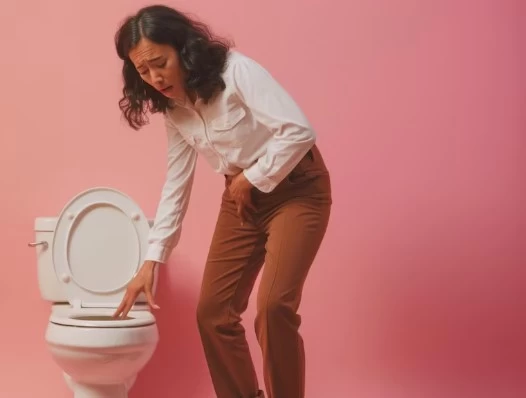
Urinary Incontinence in Women: Causes, Diagnosis, and Treatment Methods
- Urinary Incontinence in Women: Causes, Diagnosis, and Treatment Methods
- Types of Urinary Incontinence
- Risk Factors
- Diagnosis Methods
- Treatment Options
- Lifestyle Changes
- Conclusion
As an Obstetrician and Gynecologist, I frequently encounter urinary incontinence, a condition that significantly affects the quality of life for many women. Unfortunately, due to feelings of embarrassment or reluctance, many women delay or avoid seeking medical help for this issue. However, it's important to note that urinary incontinence is a treatable condition, and a timely diagnosis can lead to successful outcomes. This condition is more prevalent in older women and those who have given birth, but it can also affect younger women.
Types of Urinary Incontinence
Urinary incontinence can present in several forms, and the treatment approaches are tailored accordingly:
- Stress Incontinence: One of the most common types of urinary incontinence, it occurs when urine leaks during activities that increase abdominal pressure, such as sneezing, coughing, laughing, or exercising. Weakening of the pelvic floor muscles is the main cause. This is more frequent in women who have had vaginal deliveries, those who are overweight, or women experiencing a decrease in estrogen levels after menopause.
- Urge Incontinence (Overactive Bladder): This form is characterized by a sudden, intense urge to urinate, followed by an involuntary loss of urine. It occurs due to overactivity of the bladder muscles, often leading to a failure to control the bladder. It is sometimes associated with neurological conditions.
- Mixed Incontinence: This is a combination of both stress and urge incontinence. Women with mixed incontinence experience symptoms of both increased abdominal pressure and sudden urges to urinate.
- Overflow Incontinence: In this condition, the bladder does not empty completely, causing it to overflow, leading to continuous or frequent dribbling of urine. This can be caused by a blockage in the urinary tract or weak bladder muscles.
Risk Factors
Several factors contribute to the development of urinary incontinence:
- Childbirth: Vaginal deliveries can weaken the pelvic floor muscles, increasing the risk of incontinence.
- Menopause: The decline in estrogen levels can lead to weakened bladder and urethral muscles.
- Obesity: Excess weight puts additional pressure on the pelvic floor, increasing the likelihood of incontinence.
- Genetics: Women with a family history of urinary incontinence are more likely to experience it themselves.
- Surgical Procedures: Surgeries in the pelvic area can affect bladder control.

Diagnosis Methods
When a patient presents with urinary incontinence, a thorough medical history is taken, followed by a physical examination. In some cases, the patient may be asked to keep a bladder diary, recording urination frequency, fluid intake, and episodes of leakage. Additionally, a urodynamic test may be performed to assess bladder and urethral function, providing valuable insights into how the bladder fills and empties.
Treatment Options
The treatment approach for urinary incontinence depends on factors such as the patient's age, overall health, and the type and severity of incontinence.
- Pelvic Floor Exercises (Kegel Exercises): These exercises are designed to strengthen the pelvic floor muscles. When done consistently, they are especially effective for treating stress incontinence. Patients are taught the correct technique, and results can be seen within a few months.
- Pharmacological Treatment: For urge incontinence, medications that relax the bladder muscles, such as anticholinergics, can be prescribed. These drugs help reduce involuntary bladder contractions. Additionally, topical estrogen creams may benefit women with stress incontinence post-menopause by improving the strength of the bladder and urethral tissues.
- Surgical Interventions: In more severe cases of urinary incontinence, surgical treatments may be necessary. One common procedure is the sling surgery, where a synthetic band is placed to support the urethra and prevent urine leakage. Other surgeries that correct bladder neck positioning can also be performed.
- Botox Injections: For patients with overactive bladder syndrome, Botox injections into the bladder wall can relax the muscles, reducing the sudden urges and incontinence episodes.
- Neuromodulation: For patients who do not respond to non-surgical treatments, neuromodulation may be used. This involves delivering electrical stimulation to the sacral nerves, which control bladder function, helping to regulate urinary control.
Lifestyle Changes
In addition to medical treatments, certain lifestyle changes can improve the effectiveness of urinary incontinence management:
- Weight Management: Losing excess weight can relieve pressure on the pelvic floor, reducing the risk of incontinence.
- Fluid Intake Regulation: While staying hydrated is important, excessive fluid intake can increase the frequency of urination. Avoiding caffeinated and alcoholic beverages is also advised.
- Bladder Training: This technique helps regulate urination habits by encouraging the patient to delay urination and increase the time between bathroom trips.
Conclusion
Urinary incontinence is a common but treatable condition in women. Early consultation with a specialist can lead to an accurate diagnosis and personalized treatment plan. With appropriate management, many women can experience significant improvements in their quality of life. Regular follow-up and adherence to the treatment protocol are essential for successful outcomes, which can greatly enhance the patient's well-being.

Assoc. Prof. Pervin Karlı
Obstetrician and Gynecologist





